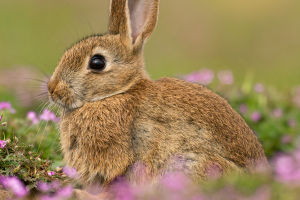The golden monkey, as the name implies, is a monkey with long golden hair all over its body.
Its fur is so fine and soft that it glows with gold in the sunlight, making it both dazzling and beautiful.
Among all monkeys, the golden monkey is the best-looking.
In addition to its golden fur, the golden monkey has sapphire eyes and a blue face, plus a skyward nose and a large, round mouth.
Golden snub-nosed monkeys live in dense woods, where they eat fruit from the trees and climb for long periods of time, making them agile and agile.
In the woods, golden monkeys move back and forth like golden elves, freely, with their long tails wagging behind them to help them master their balance.
Golden monkeys have a typical family lifestyle, with members taking care of each other, foraging for food and playing together.
In their homes, young golden monkeys are inquisitive, mischievous and loved by their parents.
But when they reach adulthood, the young males are kicked out of their homes by their fathers and are left to live independently in the wild.
Golden snub-nosed monkeys are typical forest arboreal animals that inhabit forests at altitudes of 1,500 to 3,300 meters year-round.
Its vegetation type and vertical distribution zone belong to subtropical mountainous evergreen and deciduous broad-leaved mixed forest.
Every autumn is the estrus period for golden monkeys, and the sexual maturity period is earlier for females than for males, with females being about 4-5 years old and males being about 7 years old late.
Mating occurs throughout the year, but the peak of mating occurs during the three months from August to October.
The gestation period is about 6 months, and most of them give birth in March to April, and some of them also give birth in February or May.
Female monkeys have a gestation period of about 6 months and usually give birth to one litter, occasionally two.
The newborn monkeys have dark blue faces, brown fur and cry like babies, and weigh more than one kilogram after one month.
Golden snub-nosed monkeys are omnivorous and eat plants as their main food.
It eats more than 30 kinds of plants, such as the large-leaved lady's mantle, small-leaved lady's mantle, water hyacinth, yellow-flowered willow, red-barked willow, hammer elm, large-leaved boxwood, small-leaved boxwood, and pine loosestrife.
The edible parts are mainly the young shoots and leaves of the tree and the silk lichens hanging on the tree, the pine loosestrife, and the lumpy lichens attached to the bark of large trees.
In spring and summer, the tree feeds on various shoots, fresh leaves, flowers, young roots, vine bark, bamboo shoots and wild fungi.
In autumn and winter, they feed on various leaves, seeds, berries, drupes, nuts, sorrel and bark.
Occasionally, they also eat some insects, birds and bird eggs.


